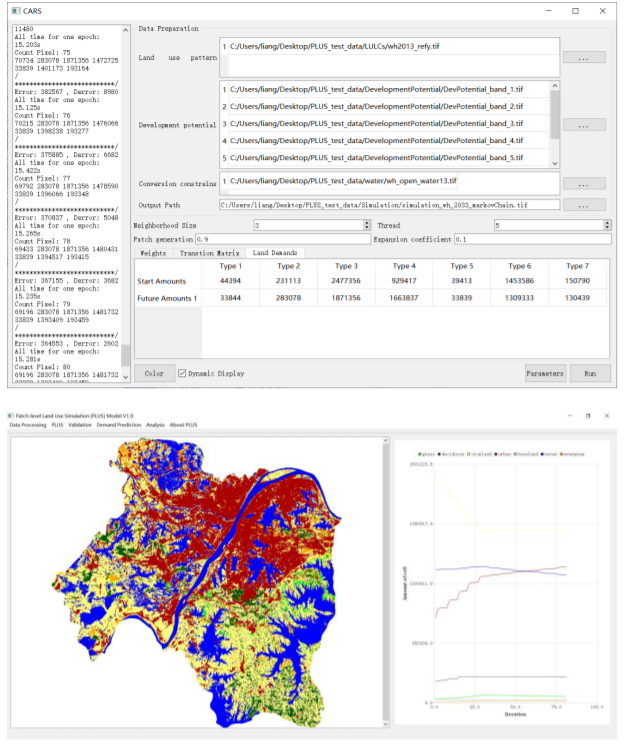Abstract
Cellular Automata (CA) are widely used to model the dynamics within complex land use and land cover (LULC) systems. Past CA model research has focused on improving the technical modeling procedures, and only a few studies have sought to improve our understanding of the nonlinear relationships that underlie LULC change. Many CA models lack the ability to simulate the detailed patch evolution of multiple land use types. This study introduces a patch-generating land use simulation (PLUS) model that integrates a land expansion analysis strategy and a CA model based on multi-type random patch seeds. These were used to understand the drivers of land expansion and to investigate the landscape dynamics in Wuhan, China. The proposed model achieved a higher simulation accuracy and more similar landscape pattern metrics to the true landscape than other CA
models tested. The land expansion analysis strategy also uncovered some underlying transition rules, such as that grassland is most likely to be found where it is not strongly impacted by human activities, and that deciduous forest areas tend to grow adjacent to arterial roads. We also projected the structure of land use under different optimizing scenarios for 2035 by combining the proposed model with multi-objective programming. The results indicate that the proposed model can help policymakers to manage future land use dynamics and so to realize more sustainable land use patterns for future development. Software for PLUS has been made available at https://github.com/HPSCIL/Patch-generating_Land_Use_Simulation_Model

Q.E.D.









